|

On eBay Now...
TURTLE Talking Stick; chip carved: Erik Sappier, Penobscot: new technique For Sale
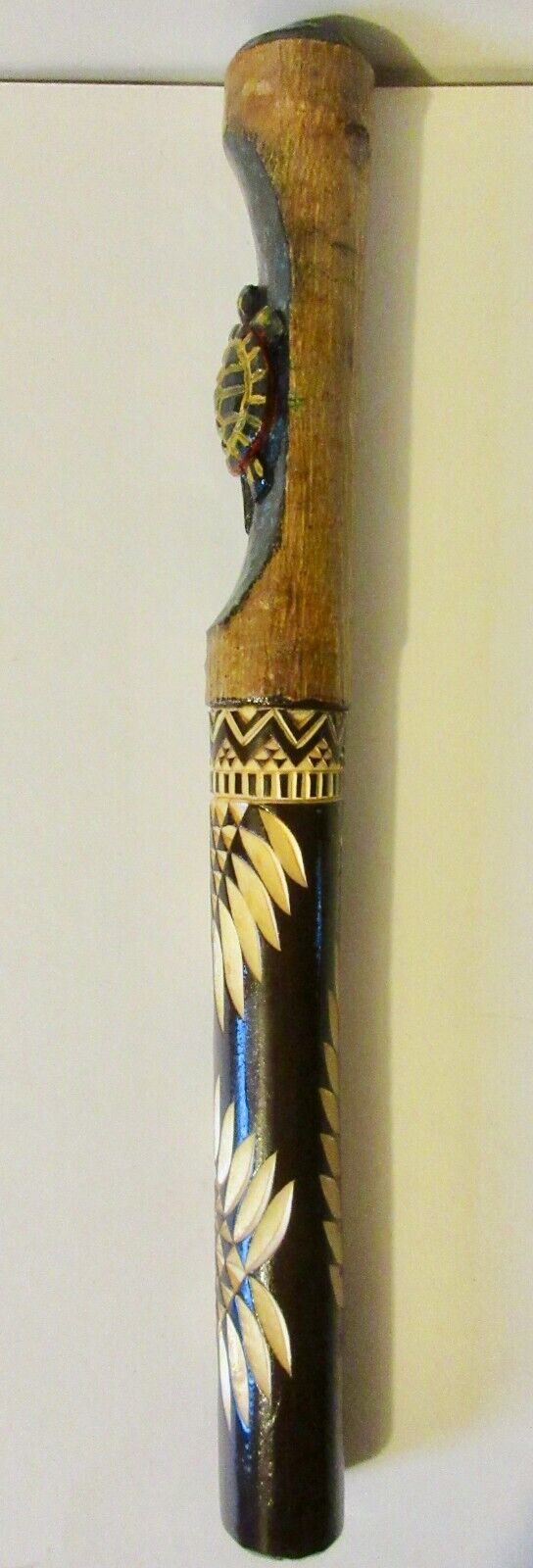
When you click on links to various merchants on this site and make a purchase, this can result in this site earning a commission. Affiliate programs and affiliations include, but are not limited to, the eBay Partner Network.

TURTLE Talking Stick; chip carved: Erik Sappier, Penobscot: new technique:
$158.75
The carved turtle atop this talking stick shows the elegance that saturated painting the bark less portion of this stick can bring. The turtle\'s shell has the shapes well defined and the head and tail suggest a turtle in motion. Erik Sappier, Penobscot /Abenaki Below the turtle Wabanaki designs on the barkless bottom portion of the stickshow the refined contrast that saturated painting can bring. Erik Sappier, Penobscot /Abenaki explains this technique \"these sticks take 4-5 coats of stain to achieve the color, whereas the talking sticks I\'ve made in the past are chip carved, stained then stain is wiped away. The painting of the turtle takes me about the same amount of time as it does to carve it, so all in all, these new painted sticks are 2-4 times more time consuming then a chip carved, then stained stick. Also, it\'s a tougher medium because I can\'t really draw what I want to chip carve, it scars the stained wood.\"
Wabanaki- a confederacy of 5 NE tribes currently residing in what is now Maine, Vermont and Eastern Canada.... The Abenaki, Maliseet, MicMac (Mi\'kmaq - Canadian spelling), Passamaquoddy and Penobscot.
This stick is painted a rich darkglossybrown (looks black in some photos - sorry it is really dark brown). Traditionally many chip carved items, talking sticks, walking sticks and root clubs have some of the bark left on some portion of these items. Here the bark is left on the upper portion of the stick, and Erik has cut out a large portion of the upper front of the stick where he has carved the turtle.
The area around the turtle carving is black with speckles of blue- like a deep dark pond with starlight shining on it. Traditionally many chip carved items, talking sticks, walking sticks and root clubs have some of the bark left on some portion of these items. Here the bark is left on the upper portion of the stick, and Erik has cut out a large portion of the upper front of the stick where he has carved the turtle. The turtle is realistic with 13 scoots on it\'s shell and the bottom portion of the shell which can be seen on the underside of the shell is painted red.
Erik Sappier\'s work is included in a recent Abbe Museum\'s exhibit.... \"Emergence: Root Clubs of the Penobscot Nation\"
This stick is exquisitely detailed. Erik uses traditional designs with several variations on a traditional style chip carved talking stick, most are design elements that have been used by Erik\'s ancestors for centuries.This talking stick has at top - the turtle.The bottom 1/2 of the stick is painted and has chip carving with some incised lines ... the carving exposes the nearly white wood making a bold contrast with the dark brown painted portion of the stick.
Directly beneath the bark on the front part of the stick is a band of triangular lines incised lines that encircle the stick -nestled beneath the lines are chip carved triangles. Below that is a second band that has vertical incised lines - making short stripes. Under the second band on the front of the stick is a triangle made chip carved triangles. From the larger triangle dangle elongated chip carved ovals - either feathers or leaves. ... At the bottom of the front is a diamond made of chip carved triangles encircled by theelongated chip carved ovals -
A morning star design is at the center right side of the stick ... this is made of four chip carved triangles with incised lines (light rays) ... And on the left side is star design made of six \"light rays\".
On the back of the stick at top center just below the band of short stripes Erik has placed his maker\'s mark - his initials \"E with dangling J\" on the left side \"S\" shaped like a lightning bolt. Below this maker\'s mark is a upright ash branch with deepchip carvedoval \"leaves\" - see more about ash/ash branches at bottom of description
This stick is 11.5\" long and about 1\" diameter. The turtle is 2\" long from tip of it\'s tail to top of it\'s nose. It is 1.25\" across This is one of Erik\'s newest sticks which utilize the glossy painted finish. You will receive information on Native Americans\' use of talking sticks with this piece. last photo; Erik Sappier holding one of his walking sticks The traditional designs have been used for centuries by Wabanaki (Name for 5 tribes - 4 of which are in Maine- Penobscots, Passamaquoddy, MicMac, and Maliseets and the Abenaki which are in Vermont and NE Canada) Erik Sappier is Penobscot and Abenaki (of the Woodstock New Brunswicktribal band of Abenaki) He grew up living on Abenaki land in NewBrunswick in the winters and summers he spent on Indian Island - thePenobscot Nation - near Old Town Maine. He is a lifelong friend of JoeHugga Dana and recently apprenticed with Hugga. Joe \"Hugga\" Dana is the son of Stan Neptune and was taught by his father to chip carve. Stan is the leading authority on Maine Indian chip carving, root clubs and walking sticks. In the process of learning Penobscot myths, history, legends and stories from Senabeh, a religious elder and root club carver, Stan picked up chip carving. So - Erik has is the latest to learn the craft that Senabeh taught.
Talking sticks were used in tribal council meetings, the only one who could speak was the one holding the talking stick.
Talking sticks were decorated, but only here in Maine and eastern Canada do the designs include chip carving. Chip carving is unique to the North East among Native Americans. The design on this talking stick is Abenaki/Penobscot and is Erik\'s way of making this stick a blend of both his native traditions. (Or aboriginal traditions as they would be called in New Brunswick Canada)
The chip carved leafed branches you see on this stick are similar in Senabeh, Stan Neptune, Joe Hugga Dana and Erik Sappier\'s work. These branches and leaves were a subject of conversation between Hugga and Erik recently. They say it is a brown ash which is a sacred tree to the Northeast Native Americans - it figures in their creation myth... they were made by an arrow piercing the brown ash tree and the splinters became the people. Please check out all the pics in the slide show to see several traditional designs around this stick. And also to see a photo of Erik taken at the College of the Atlantic\'s July 2010 - Maine Indian Basketmaker\'s show

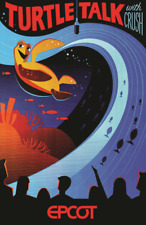
Epcot Turtle Talk with Crush Attraction Poster Print 11x17 $19.99
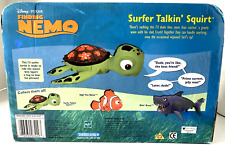
DISNEY FINDING NEMO TALKING SQUIRT SEA TURTLE 12" PLUSH STUFFED ANIMAL VTG 2002 $39.96
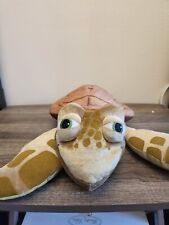
DISNEY STORE Talking Puppet CRUSH SEA TURTLE Finding Nemo 18” LARGE Plush WORKS $16.81
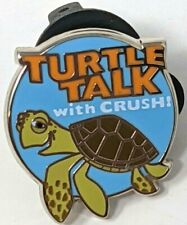
WDW Tiny Kingdom Edition 2 Series 2 Mystery Collection - Turtle Talk With Crush $17.00
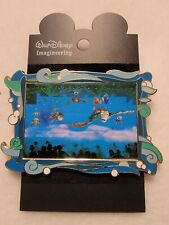
Finding Nemo Squirt Turtle Talk With Crush WDI Disney Pin C05 $40.00
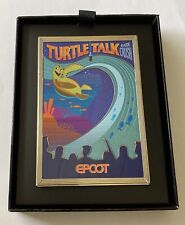
Disney World Epcot Attraction Poster Turtle Talk with Crush Seas WDI LE 250 Pin $60.00
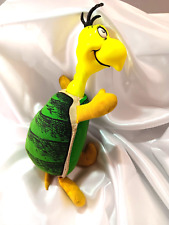
RARE Vintage (1970) Mattel No. 5263 Dr. Seuss Yertle the Turtle Talking Plush $220.00
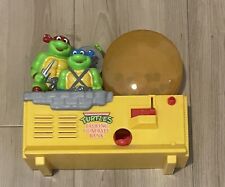
1989 Vintage Teenage Mutant Ninja Turtles Talking Gum Ball Bank WORKS $39.99
|